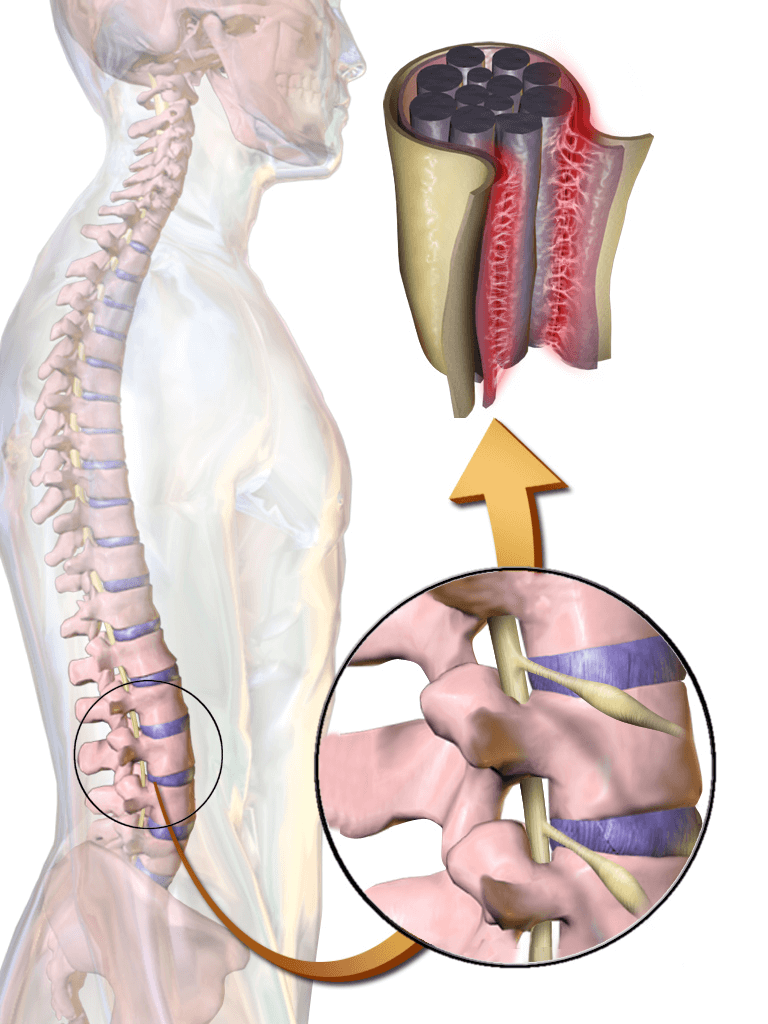What is Spinal Cord Stimulation?
Spinal cord stimulation is a medical therapy designed to prevent pain signals sent from the nerves from reaching the brain. The disruption in the transmission of sensory signals sent from the nerves is initiated by a small device implanted in the body for the purpose of sending electrical pulses to the spinal cord and masking the pain signals.
Often Used to Treat:
Use of a spinal cord stimulator is often recommended after other medical treatments have failed, when surgery to address a condition has failed, or when surgery is not an option for treatment.
The purpose of spinal cord stimulation is to provide patients with a way to better manage the pain and discomfort associated with chronic conditions that have not responded to other methods of treatment, including:


How is a Spinal Cord Stimulator Implanted?
Initially, and before being implanted into the body, a spinal cord stimulator (or SCS) is used on a trial basis; should the trial SCS therapy prove to be effective, the device is then permanently implanted in the body.
Patients are lightly sedated prior to starting the procedure to permanently install the SCS. Your doctor will also administer local anaesthetic in or around the area designated for placement of leads for the SCS; the patient is then administered a general anaesthetic right before the SCS device is implanted.
The leads associated with a spinal cord stimulator are installed in the epidural space by using a tiny needle or a very small incision; the specific location of lead placement will depend on where exactly the patient’s pain is located. The spinal cord stimulator itself is typically implanted in the stomach or buttock region; however, there are other locations your physician might choose as the best install location for your specific situation.
Most SCS procedures are completed on an outpatient basis; some doctors will keep a patient overnight in the hospital for observation as a precaution. Like any surgery, it is common for patients to experience pain or discomfort at the site of incision; however, most patients report they are unable to feel the device after the incision has healed.
Although commonly referred to as a permanent installation or treatment option, spinal cord stimulation is a reversible procedure with the device being able to be turned off or removed at any time.
What are the Risks Associated with Spinal Cord Stimulation?
Like any surgical procedure involving the spine, there are risks that accompany SCS surgery, including:
- Infection
- Headache
- Allergic Reaction to Medication
- Spinal Fluid Leakage
In addition, risks that are specific to the spinal cord stimulator itself can include:
- Over-stimulation of the nerves.
- Intermittent starting or stopping of stimulation
- Stimulation of nerves in the incorrect location
- Battery leakage or failure
- Leaking of cerebrospinal fluid
- Chronic pain at the site
- Allergic response to materials implanted in the body.
What are the Benefits of Spinal Cord Stimulation?
Despite the risks associated with SCS, the procedure itself is considered low risk and spinal cord stimulation therapy has been reported to have a number of benefits, including:
- Allowing the patient to be in control of treating and relieving nerve pain and discomfort.
- Providing users increased ability to resume most or all of normal activities, including those activities related to work and/or exercise.
- Improved mental outlook and sense of wellbeing associated with relief of chronic nerve pain and discomfort.
How Effective is Spinal Cord Stimulation?
Research indicates that SCS therapy provides long-term relief in nearly 80% of patients suffering from chronic pain and discomfort caused by conditions affecting the nerves. Further research indicates that roughly 25% of those receiving a spinal cord stimulator experienced improvements and pain reduction significant enough to allow for the return to normal activities

At 360 Pain Treatment, our mission is to provide compassionate pain relief, restore prior function and activity levels, and optimize the quality of life for all.

360 Pain Treatment aspires to create a culture of care in our communities by helping those suffering with pain to live more pain-free and thus improving their quality of life.

- Compassion for all who are ailing and in need of help.
- Advancement of minimally invasive healthcare procedures that firstly considers patient wellbeing.
- Respect and inclusion for everyone we serve in our communities.
- Excellence and efficiency in all that we do.








